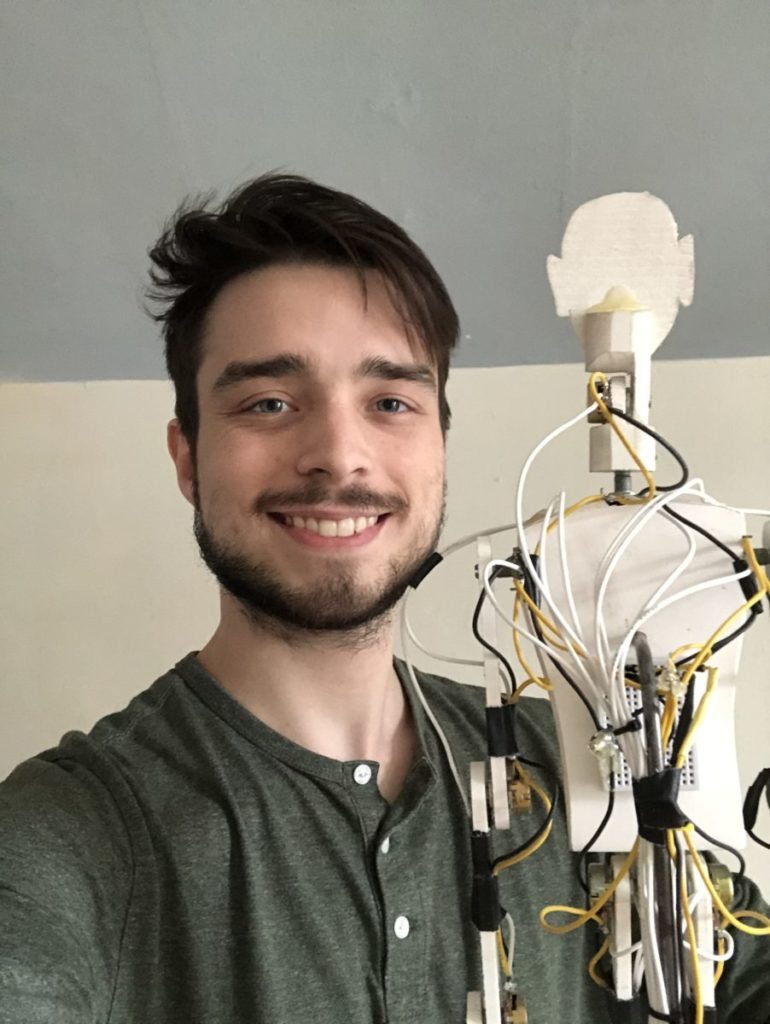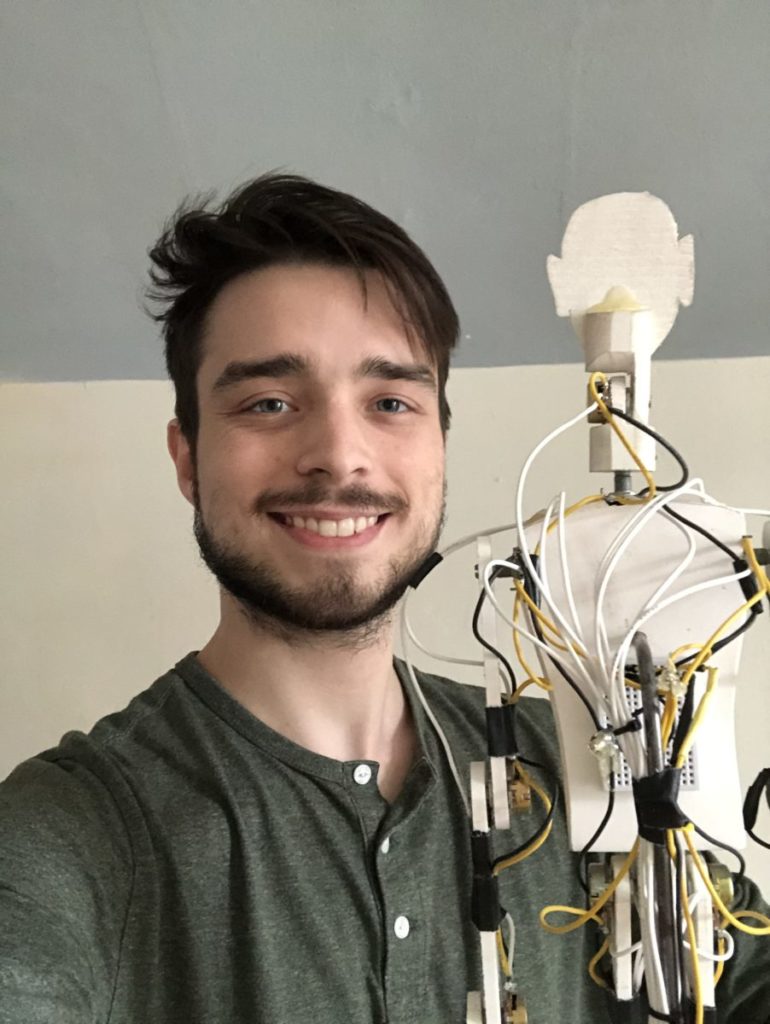
Andrew Gardner

As I initially sat down with Andrew, I noticed how carefully he placed down his laptop and his project. The simple action showed how much work he put into it and how much he valued it. I could tell by the wires the breadboard attached to it, and the many lines of code that it was fragile along with the amount of detail put into it. It also showed that even though it may not have been as perfect as he wished, he was still incredibly proud of what he did.
When it came to college, Andrew Gardner was unsure what he wished to do, so he put his major as Undecided, this decision leads to many unfulfilling classes. These classes took up precious time and energy that didn’t seem of value to him. In order to solve this problem he went to the career center to talk to someone about his goals and put his likes and hobbies to use. After explaining his many interests and dislikes it was decided that he should pursue his college career in the New Media department, which sent him on the path to this Capstone project. His first exposure to one of the components used in his project was Arduino, in NMD 100 taught by Michael Scott. Not only did he have the mind for this type of programming and building, but he had also worked with something similar when he was younger bringing back a childhood fondness. Not only did Ardunio bring back childhood memories, but it also connected him with many like-minded people on the open platform it has through its website. This allowed him to see the true potential of the program and how creatively it can be used. This website also allowed him to communicate with those who had more experience or different ways of using the program.
Later in his college career, he took some animation classes with Aaron Boothroyd, where he learned about after effects, animation, and adobe suite. Over time he gained more and more experience and built upon his skills as a New Media student. His love for animation and robotics brought him to the idea of his capstone. He created a program to teach students from high school and middle school about animation. Using C sharp as the coding platform, Unity to create the 3D model, a wooden mannequin and Arduino sensors, breadboard, and wires he brought his capstone idea to life.
As he explained the process of his project to me I began to truly understand how in-depth it was. Even before he jumped into explaining the code, I could see the numerous lines of coding on the screen, and even with my limited amount of experience with coding, I knew it must have taken him days if not weeks to do and to do it properly. He explained to me that he needed to figure out a way to connect Unity and the Ardunio, two very different programs with different niches, much easier said than done. Delving into the internet and different online coding communities he found that there was a plugin play packet free to use, which only needed a few adjustments to fit his way of coding in Ardunio.
From there it was all on him, trying to “dissect” the code in such a way to make it work for his own project. For each part of the mannequin and the parts that were communicating with one another, there were different values, that needed to be mathematically subtracted or added to make the communication more clear. For example, the potentiometers have a value of 90, so that 90 needs to be subtracted from the initial value to get the correct reading to show the movement in Unity. Each part had its own function, which then sent a message or information to another part and so on and so forth. The amount of code was staggering, as seen in the photo below.
After he broke down the process he went through I wanted to know what it was he would change if he either had more time or would do the project again. He felt that the mannequin itself needed far more work, to make it both functional and practical for middle and high school students to work with. The thin wooden frame was large in size, but the pieces were fragile and thin, the wires could be easily unplugged or worn. To make it more durable, 3D printing the mannequin and having all the wires and breadboards on the original put inside of the remake version was the best option. Not only would having a 3D printed casing help protect the wires, but it would also protect the sensors and the connections to the sensors allowing for the reading to be more accurate since they’re not constantly hit of tampered with. Lastly, Andrew felt that he needed to do more research on the topic of animation, in order to make a more complete version of the software for students to work with. Ultimately he was happy with the final product with the amount of time that he had, and the amount of research he needed to bring this project to life. He felt he learned many new things that showed him what he could do with the skills he learned from New Media and opened his eyes to jobs and opportunities in the world for his skills.
